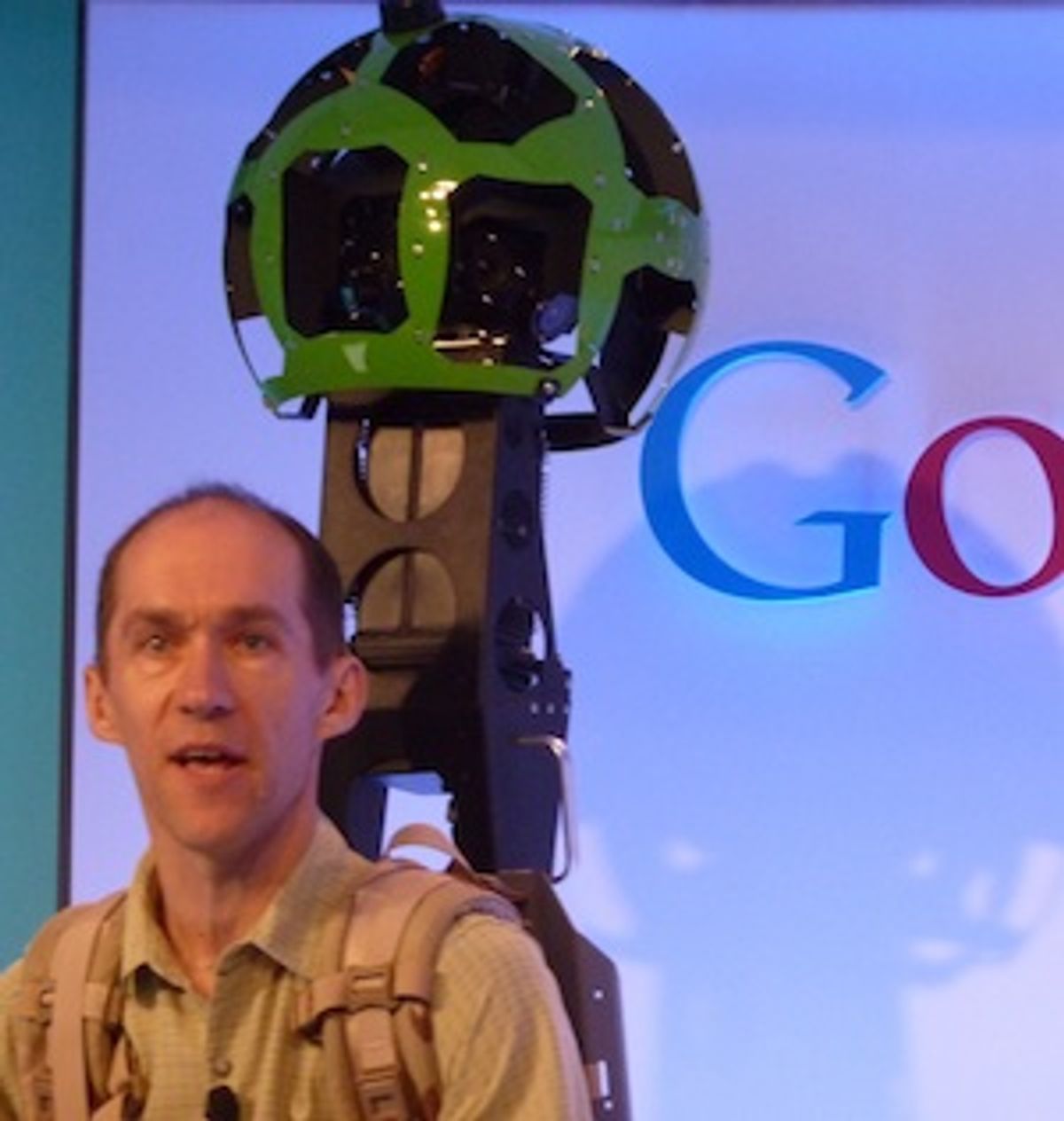But whether or not Apple’s entry into mapping happens next week or next month, it’s already kicking off an arms race in mapping technologies.
Yesterday, at a crowded press conference in San Francisco, Google showed off its newest weapons: 3-D models of metro areas, Street View Trekker, and offline maps. While each has a definite cool factor, none alone is big news, a fact that disappointed the tech journalists and local television news media attending the event. But they do mean the battle has begun.
Taking them in order of coolness, first comes the new 3D feature of Google Earth for mobile. Google is mapping metropolitan areas in full 3-D, including terrain and landscaping along with buildings. These models can be spun, zoomed, flown over—I’m not exactly sure what practical purpose this serves, but it is an amazing amount of fun. (See the video below.)
Google is generating these models from data gathered by planes flying in tight patterns across the cities, taking high-resolution photographs straight down and from 45-degree angles. The company processes these images to create 3-D models. To color the models, algorithms identify each pixel, and then sort through the multiple photographs that include that spot on the building or landscape to select the most appropriate color. Finally, the system crunches that data down into a small enough package for transmission and storage. (Exactly how much data and how small a package weren’t discussed.) Google says this 3-D feature will be available for Android and iOS devices in a few weeks. There was no word on exactly which cities besides San Francisco have been modeled; instead, Google provided a fairly meaningless statistic—over 300 million people will live in communities that have been modeled by the end of this year. Anyway, if you live in a city and see a low flying plane this summer, don’t panic, just look up and smile for the camera.
Going to the other extreme—from crowded metro areas to remote hiking trails, Google has shrunk these size of its Street View image capturing system from a huge pile of equipment strapped to a van to an alien-looking backpack (photo at top) that can go on the hiking trail or the ski slope. You can still get off grid, but no longer can you get off the map.
Finally, less gee-whiz-y but potentially more useful, Google announced that its map app for mobile devices will soon work offline; people can download a map of a specific area ahead of time, and not have to worry about getting lost when they lose a data connection. The company says this feature will be available for Android devices only. Again, would-be users will have to wait a couple of weeks.
So Google has thrown down the gauntlet; next week we’ll see if Apple throws it right back.
Follow me on Twitter @TeklaPerry
Tekla S. Perry is a senior editor at IEEE Spectrum. Based in Palo Alto, Calif., she's been covering the people, companies, and technology that make Silicon Valley a special place for more than 40 years. An IEEE member, she holds a bachelor's degree in journalism from Michigan State University.




